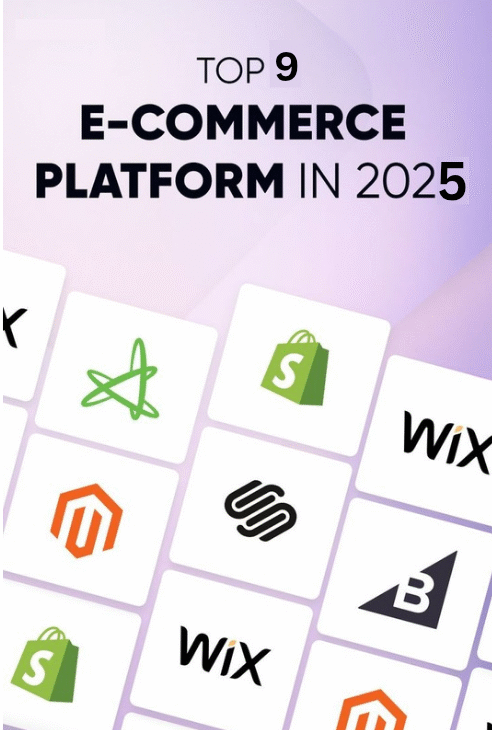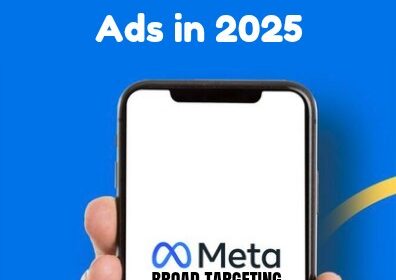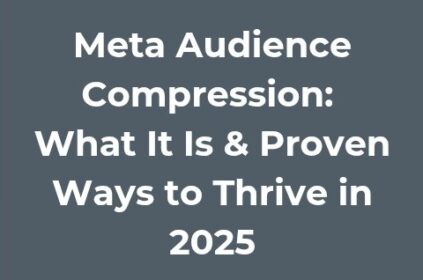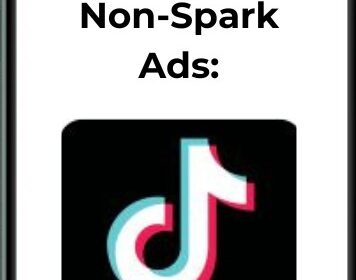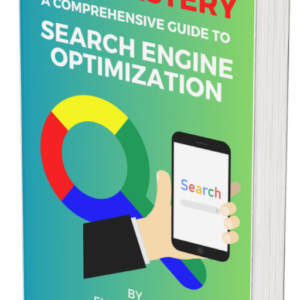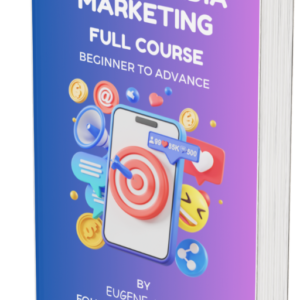Digital ad spending will clear the $1 trillion mark this year, with three-quarters flowing into online channels. For store owners, the choice of platform now shapes profit more than creative alone.
The best eCommerce advertising platforms for 2025 combine automation, privacy-safe targeting, and real-time reporting to convert rising acquisition costs into predictable revenue.
Read on to find out the right platform selection intersects with small shops seeking their first sale, scaling brands pushing global reach, and enterprises defending share.
Why Platform Selection Matters More Than Creative In 2025
Browser-level tracking changes and retail-media growth mean that channel economics no longer look the same across the funnel.
Global advertising revenue is on pace to reach $979 billion in 2025, up 4.9 % year over year, but performance gaps between platforms are widening.
At the same time, retail media networks such as Amazon, Walmart Connect, and DoorDash Ads will attract $62 billion, fuelled by closed-loop first-party data. When you match campaigns to the best eCommerce advertising platforms for 2025, you secure cost-efficient impressions while preserving attribution clarity.
The wrong match, however, inflates cost-per-acquisition, erodes margin, and obscures which tactics are actually scaling revenue.
Platform choice therefore becomes a strategic decision—one that affects creative formats, data sharing policies, and even fulfilment models.
Four Metrics That Separate Hype From ROI
To filter hundreds of contenders into a concise list, we scored each candidate across four dimensions:
#1. Verified buying intent: search queries, cart data, or deep interest signals that shorten the path to checkout.
#2. Cost efficiency: average CPM/CPC benchmarks and how machine-learning bidding stabilises cost volatility.
#3. Measurement transparency: availability of API hooks, server-side event support, and cross-device attribution.
#4. Support ecosystem: certified partners, learning hubs, and onboarding speed for in-house teams.
Only platforms exceeding the industry median in at least three of the four categories earned a place. Each recommendation below includes real-world applications so that you can translate criteria into action.
This approach also shows which platform is best for advertising your business when audience overlap, privacy thresholds, and creative bandwidth enter the equation.
#1. Google Ads & Google Shopping
Search remains the highest-intent entry point for online retail. Google Ads processes billions of commerce-focused queries daily, while Google Shopping displays real-time product data, prices, and merchant ratings alongside those queries.
Together, the pair sits at the core of the best eCommerce advertising platforms for 2025. Marketers report conversion rates up to 1.5 × higher for Shopping listings compared with text ads, especially for SKU-level campaigns that sync automatically with Merchant Center feeds.
Cost control has improved, too: Google’s Performance Max bundles search, display, video, and Discover placements under a single budget, allowing the algorithm to balance CPA in volatile auction pockets.
For small businesses, free product listings provide zero-cost visibility, satisfying the need for free online advertising platforms without compromising reach.
Meanwhile, advanced advertisers can layer Customer Match audiences and cart-value-based ROAS bidding to defend profitability. If you wondered which platform is best for ecommerce ads when purchase intent is paramount, this duo often answers the question.
Keys to Maximising Google Shopping ROI
Keep feeds synced daily, enrich titles with attributes buyers filter for, and submit at least three high-resolution images per item.
Add price-competitive promotions through Merchant Center to surface “sale” overlays that lift click-through rates.
Finally, split campaigns by product margin tiers so ROAS targets align with actual contribution, not blended averages.
#2. Meta Ads (Facebook & Instagram)
With three billion monthly active users, Meta platforms still offer unmatched demographic and interest granularity.
In 2025 the Conversions API lets advertisers send server-side events that survive signal loss from cookie deprecation, restoring attribution windows beyond seven days.
Dynamic ads pull catalogue images into personalised carousels, automatically matching SKUs to browsing behaviour. For brands asking which platform is best for ecommerce ads when remarketing is critical, Meta often leads thanks to this functionality.
Performance varies by objective: lead forms and catalogue sales campaigns see lower CPMs but require strong creative testing, while Advantaged+ Shopping bundles prospecting and retargeting into one simplified workflow.
Brands that layer influencer-generated content into these campaigns report ROAS lifts of 21 % on average, according to Meta’s internal benchmarks.
Importantly, small budgets can still compete: minimum daily spend for learning phase stability sits around $50, making Meta accessible for beginners yet powerful enough for enterprise spend.
Emerging Meta Placements You Should Test
Reels ads now account for more than 50 % of time spent on Instagram, and CPMs remain 30 % lower than feed placements.
Try 6-second, hook-first creative with auto-generated captions. On Facebook, Advantage+ Creative customises aspect ratios per placement, reducing production time while sustaining brand consistency.
#3. Amazon Ads & Retail Media Networks
Advertising within marketplaces pushes shoppers directly to purchase pages, removing friction that plagues off-site funnels.
Amazon commanded 14.6% of US digital ad spend in 2024 and continues to grow through sponsored product, brand, and display inventory.
Because transactions occur on-platform, you receive closed-loop sales data, making Amazon one of the best eCommerce advertising platforms for 2025 when profitability tracking is non-negotiable.
Sponsored Display now retargets visitors on third-party sites, expanding reach beyond Amazon while preserving first-party signals.
Meanwhile, Walmart Connect and Target Roundel replicate the model, letting CPG and DTC brands tap grocery buyers. These networks answer which e-commerce platform is most profitable when margin on repeat consumables drives LTV.
They also illustrate advertising platforms examples that run inside shopping ecosystems, not social feeds, positioning them for higher cart value.
Bidding Strategies For Retail Media
Separate branded and generic terms to prevent overpaying for your own traffic. Use Amazon Marketing Stream to pull hourly performance data and adjust bids programmatically, raising visibility during peak hours and throttling spend overnight.
Finally, monitor New-to-Brand metrics—if over 25% of orders come from fresh customers, scale that campaign; otherwise optimise toward retention tactics like Subscribe & Save.
#4. TikTok & YouTube Ads
Short-form discovery shapes purchase decisions earlier in the funnel than ever. TikTok users now spend an average 56 minutes per day on the app, with 55 % reporting they bought a product after seeing it on the platform.
Spark Ads allow brands to amplify organic videos, preserving social proof. On YouTube, shoppable TrueView for Action overlays “Buy Now” buttons without disrupting watch time, and CTV inventory reaches 80 million US households via the new Roku–Amazon DSP integration, boosting incremental reach by 40 %.
Video depth answers which platform is best for ecommerce ads when storytelling drives differentiation.
Creative costs drop as templates and in-app editors mature, making these channels viable even for brands still testing product-market fit.
Their algorithmic delivery also meets beginners seeking e-commerce advertising examples that do not demand granular keyword mapping.
Creative Principles For 2025 Video Success
Hook within three seconds, showcase the product in use, and anchor on a clear benefit—not character-driven narratives.
Add captions for sound-off viewers and end with a direct call-to-action. Rotate creative every two weeks to prevent fatigue, and feed platform APIs with post-purchase data to refine lookalikes.
#5. Pinterest, Snapchat & Microsoft Advertising
Relying on two giants leaves revenue exposed to auction swings. Pinterest produces a $6.94 revenue-per-user figure, far below Meta’s $52, implying cheaper reach and upside for early adopters.
Idea Pins double as evergreen content and paid ads, driving search traffic months after publication. Snapchat’s AR lenses let users virtually try products—a feature that lifts conversion rates for beauty and apparel by up to 18 %, according to internal case studies.
For B2B or high-consideration purchases, Microsoft Advertising taps LinkedIn profile data to serve intent-rich search ads across Bing, AOL, and syndicated partners.
Together, these channels offer free credit promotions for first-time advertisers, ticking the free online advertising platforms box while delivering measurable conversions.
Testing them positions your brand ahead of slower competitors and answers the call for an updated e-commerce platforms list beyond household names.
When To Allocate Budget To Secondary Networks
Set a rule-based ceiling: once primary channels hit diminishing returns at a specific CPA, divert 10–15% of spend to at least two emerging platforms.
Track assisted conversions in Google Analytics 4 or a dedicated attribution tool so incremental revenue is visible, not lost in last-click bias.
Budgeting For Success
Average CPC on Google Shopping hovers near $0.66 for US apparel, while Meta catalogue sales campaigns trend around a $0.54 CPM in emerging markets.
Retail media networks sit higher—Amazon sponsored product clicks in competitive electronics categories often top $1.20 but offset that cost with 10% higher average order values.
Digital video CPMs vary: YouTube in-stream averages $4.18; TikTok’s campaigns aimed at add-to-cart events settle near $3.95 after learning phase adjustments.
Running granular channel P&Ls guards against blended ROAS illusions. Track contribution margin after ad spend, fulfilment fees, and platform commissions.
For small business owners wondering which ecommerce platform is best for small business, cost of goods and fulfillment will influence the breakeven ROAS threshold more than bid price alone.
Start with single-channel tests until each meets or beats breakeven; only then layer incremental platforms.
Integration And Attribution
Server-side event tracking is mandatory now that browser cookies face systemic decay. Google’s Enhanced Conversions and Meta’s Conversions API both hash email addresses to maintain match quality.
Amazon’s Brand Metrics reports customer acquisition cost directly, while TikTok Events API fills the same gap on mobile-first audiences. Adopt a tag-management system that pipes all events into BigQuery or Snowflake, then push conversions back to ad networks via post-back URLs.
This closed-loop data answers which platform is best for ecommerce ads for your specific catalog, not a generic ranking.
Beginners might rely on out-of-box Shopify integrations, whereas experienced teams build house-made dashboards that score channels by contribution margin and LTV.
Either route is essential to turning the best eCommerce advertising platforms for 2025 into a coordinated portfolio rather than bets.
Conclusion
Selecting from the best eCommerce advertising platforms for 2025 is less about following a universal ranking and more about matching strengths to your funnel gaps.
Search-driven Google properties excel at harvesting existing demand; Meta simplifies full-funnel scaling; Amazon and other retail media networks monetise bottom-funnel intent with closed-loop data.
Video channels TikTok and YouTube move prospects from discovery to checkout; and diversified networks such as Pinterest, Snapchat, and Microsoft Advertising provide incremental reach at competitive rates.
By testing each against the four-metric framework—intent, cost, measurement, and support—you answer in practice which e-commerce platform is most profitable for your model, which platform is best for ecommerce ads at every stage, and how to keep acquisition costs stable as the privacy landscape shifts.
Treat this guide as a blueprint: begin with one or two aligned to your immediate bottleneck, implement robust attribution, and then layer additional channels once margins stabilize.

